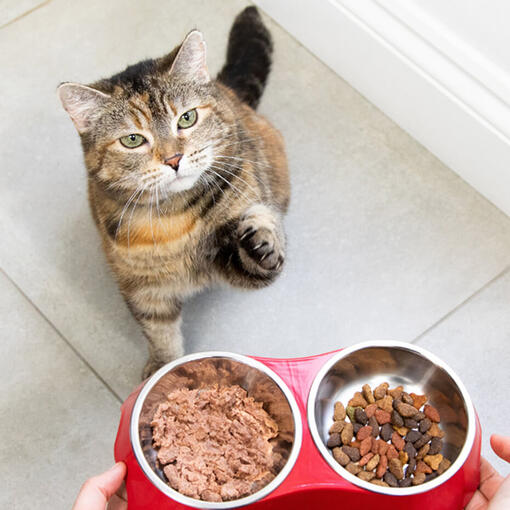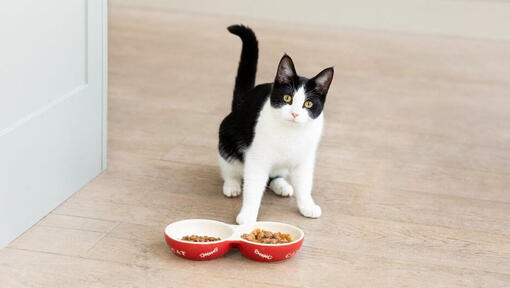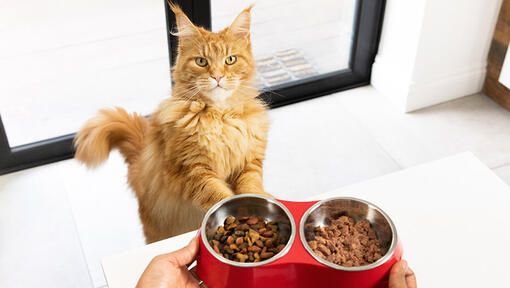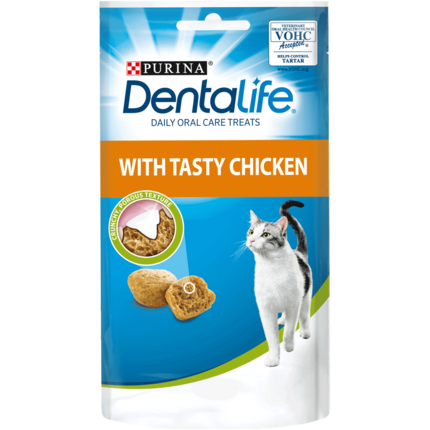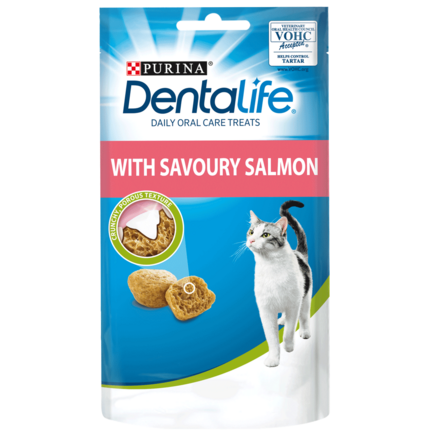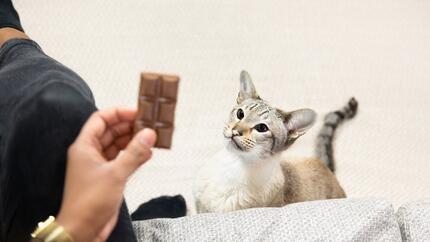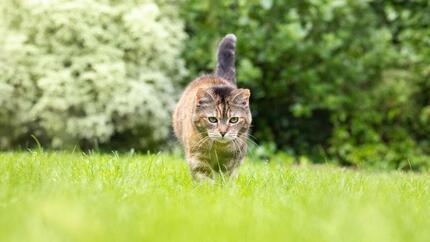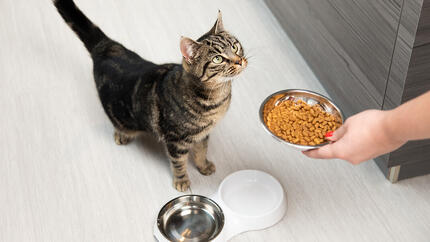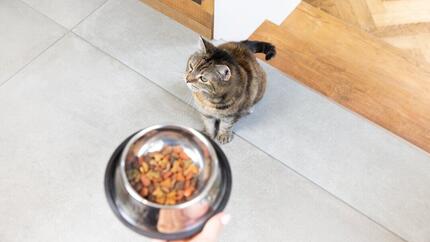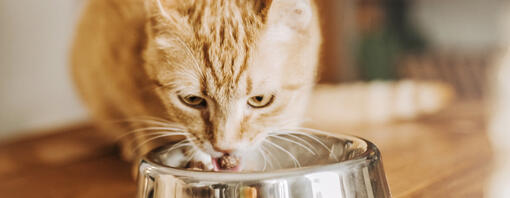
Once your cat has reached their first birthday, it’s time to think about a regular cat feeding routine. As they change from a playful kitten to a full-grown adult cat, it’s important to make sure they have all the right nutrients they need to stay happy and healthy. That is why it is important to know all there is to feeding an adult cat and knowing what cats like to eat.
To keep in tip-top condition, your cat’s diet needs the right balance of proteins, fats and oils, minerals, vitamins and carbohydrates. It might sound a bit complicated, but good-quality complete feline food should provide everything your furry friend needs, and unless advised to by your vet, a well-balanced diet means your cat won’t need any other diet supplements.
Find out how much and what to feed cats for their health and happiness with tips from the PetCare team below.
What to feed cats
It might seem like there’s a huge amount of choice out there. Answering ‘what is the best food for cats?’ seems impossible. The good news is that whatever your cat’s lifestyle, condition or age, there’s a food that’s right for them.
Ultimately, unless influenced by a medical condition, deciding whether to give your cat wet or dry cat food is completely up to you (and your cat of course)!
Some owners serve a mixture of dry and wet foods - some cats prefer wet food in the morning and to have dry food left out during the day to graze on. Try your cat with both to see which they prefer.
Find out more about feeding your cat and the benefits of wet and dry food in our guide.
Purina food for cats
Purina produces many of the UK’s leading dry and wet adult cat foods, for every life stage and lifestyle. See our full range of cat food.
- If your cat spends most of their time indoors, they may benefit from a special indoor formula to reduce hairballs, or a lower calorie diet as they’ll be less likely to roam and more likely to put on weight, such as Pro Plan Light.
- If your cat is neutered, they may find a specialist food for neutered cats helpful to aid with maintaining a healthy urinary tract, such as Purina One Urinary Care.
- Older cats will also need to have a slightly adjusted diet, as well as pregnant mothers and cats that are obese or overweight. Purina has several ranges just for senior cats.
- Some fussy felines have a preference for certain flavours. If your cat prefers fish to fowl, Felix Pick ‘n’ Mix cat food bundles have the answer. Now you can choose 6 of your cat’s favourite flavours and build your box of 120 tasty pouches and get them all delivered right to your door.
If your cat has special nutritional needs, or you are concerned about their diet, make an appointment to chat this over with your vet.
Cat feeding guide tips
- Cats are creatures of habit, so getting into a regular routine as soon as they’re ready to move onto adult cat food is best for both you and your cat.
- Feeding a cat in the same place and at the same times each day is best, in a quiet area where they can relax, well away from their litter tray.
- Choose a surface that can be easily cleaned, or use a cat feeding mat, and always use a clean ceramic or metal bowl. Some cats may prefer to eat from a flat bowl or saucer – this can also help slow down fast eaters!
- If you have more than one cat, make sure their feeding bowls are a reasonable distance apart to avoid any confrontation. If your cats really don’t get along, you may even need to have completely separate feeding areas to keep the peace.
Changes in circumstances can mean that your cat needs adjustments to their diet. Even moving from a house with a garden to one without can mean your cat needs fewer calories as it won’t be running about as much!
-
If you need to change your cats’ diet but they’re currently unwell, ask your vet to advise on the best way and best time to make the change.
-
If you’re switching from wet food to dry food, your cat will need more water available to them throughout the day, and they might start to eat their food in more than one sitting, rather than eating it all at once.
-
If you’re switching from dry to wet cat food, it’s completely normal for your cat to drink a little less than usual, and eat more food in less time than they usually do.
-
Dry foods are usually more energy-dense than wet foods, so you may need to give your cat proportionally more wet food to get the same number of calories.
Changing your cat's food
You should keep a careful eye on your cat’s eating habits and body condition, and if you spot any changes, or think that they may need a different diet, make an appointment to talk it over with your vet. If your vet agrees that your pet needs a change in diet, then you’ll need to change it gradually to avoid upsetting their stomach with a sudden swap, whether it’s switching from wet to dry cat food, or between brands.
- Put a little of the new food in a separate bowl alongside your cat’s current food.
- Over the next week, gradually increase the amount of new food you give your cat, while reducing the amount of the old food. Some cats might need up to two weeks to change from one to the other completely, so be patient!
That’s our cat feeding guide, we hope we’ve helped to answer your question on how much to feed your cat! Looking for greater feline feeding content? Take a look at our guide on special diets.




